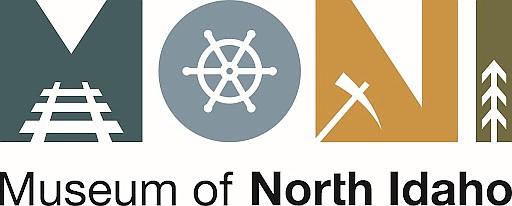Moving History Forward — Rutledge Timber Co: Finding 'Lokey'
The Rutledge Timber Company, a part of Potlatch Corp., purchased a large block of white pine on the Marble Creek drainage during the early 1900s. Marble Creek, a tributary of the St. Joe River, some 25 miles east of the mill town of St. Maries, is a cascading stream that descends rapidly through rocky chasms on its lower end.
Originally, Rutledge tried to move its logs to the mills by constructing splash dams and flushing its logs down the stream. But this led to frequent logjams and timber that was so thrashed during the process as to be unusable. The timber that did make it to the mill required the employ of three full-time people whose sole job was to pry rocks from the end of the logs before they damaged the saw. The logs were cut three feet longer than usual to account for the excess damage to the ends.
This could not continue, so Rutledge was forced to seek another way to move its logs to market. The slope from the Marble Creek Basin was far too steep and rugged to even consider a railroad in that direction. But a wide valley around the Milwaukee Road station of Clarkia on the Elk River branch lay just to the southwest.
In 1922, Rutledge constructed a logging railroad that ran north from Clarkia to the base of the low ridge that separated the Marble Creek Basin from the St. Maries River Valley. The ridge required the use of an incline railroad. Steam donkeys and cables were used to hoist a locomotive and log-filled cars up one side and down the other of the 1.5-mile track. To this day, the ridge is known as “Incline Ridge.” This was an expensive operation and, when the timber finally played out in the 1940s, the company still considered the whole project to be a financial loss.
Little remains of the operation, save one unfortunate piece of equipment. During the closing day of the operation, the last of the equipment was being hoisted out of the Marble Creek Basin. Last to ride the Incline was a 48-ton logging “lokey” (locomotive). As it was being hoisted up the Incline, the old cables broke and the locomotive went flying down the hill, jumping the tracks and into the ravine of Lines Creek. The cost of extracting her would be far too expensive, so the locomotive was left to rust where she came to rest. And there she sits to this day.
• • •
To learn more about the importance of logging in the development of North Idaho, visit the Museum of North Idaho at 115 Northwest Blvd. Open daily 11 a.m. to 5 p.m. through Sept. 5. Fall hours are Monday-Saturday through Oct. 29. One hour of free parking comes with paid admission. For information, call 208-664-3448 or see www.museumni.org.





